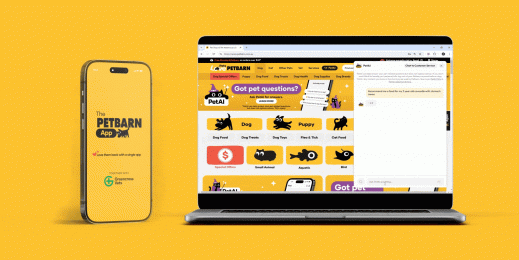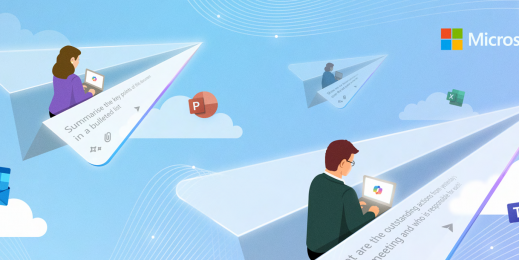
Dynamics 365
Department of Industry, Innovation and Science harnesses Azure and Dynamics 365 to transform the way it supports Australian businesses
Every four weeks Clive Rossiter and the Single Business Service team roll out new features and functions to the Department’s core business platform, injecting efficiencies and overcoming roadblocks. It’s what every Agile enterprise strives for – the ability to respond nimbly to business requests and shifting market conditions.
The Federal Government is no different.
Rossiter is general manager for digital business services, and, working with CIO and chief digital officer Matthew Boyley, has driven a technology and cultural transformation through the Department of Industry, Innovation and Science which is setting a new high watermark for what is possible in Government.
The DIIS has a broad remit, but one of its key objectives is to increase the productivity and global competitiveness of all Australian businesses.
Easy to say, hard to do.
DIIS is leading the way in Australia. It is one of the first federal agencies to federate with Microsoft Azure and one of the first government departments in APAC to roll out Dynamics365 which is proving a powerful ally for both Department staff and Australian businesses.
DIIS supports Australian businesses with a range of government programmes – from generic information services explaining how to start a business, how to run it, how to grow it; it offers a range of advisory and facilitation services that support organisations as they set up connections and networks with researchers or venture capitalists; and, it provides access to a range of business grants and other financial assistance.
In the past the Department’s front line staff managed customer interactions as best they could using spreadsheets and databases as it had no customer relationship management (CRM) system. Squirrelled away in personal silos this information could not be shared or re-used, and there was little transparency across the organisation.
As Rossiter says; “We really didn’t have a single point where you could get a view of the customer.”
With the roll out of Dynamics 365 and Azure, and the adoption of Agile practices and processes across the Department, a transformation has rippled through the Agency.
Rossiter says; “We are transforming in a number of ways – one is in the way we deliver services to business in the digital transformation space. We are moving from a siloed portfolio of service offerings to something very much more about the customer and meeting their needs, delivering a holistic service and user experience. We can do a lot more of the hard work for them.”
As cloud based software, delivered as a service, Dynamics 365 means information can be available to users; “Across locations and time zones, it’s simple and intuitive and we are reusing data so we don’t have to ask the same things over and over.
“We’re also using business’s data smarter – rather than relying on them to find out for themselves what they need, we are moving to more of a push model where we know enough about them to make good recommendations on how we can add value to their business.”
That flipped focus has demanded a transformation from Rossiter and his team which has adopted Agile methodologies, is fostering an Agile culture and places a strong focus on user centric design bringing front line staff and IT teams together to ensure what is developed and delivered meets a genuine user need.
The journey to Dynamics 365
There are around 2 million businesses operating in Australia, and DIIS research shows that over half of SMEs have used business.gov.au or another Department service in the previous 12 months.
The Department understood that to deliver improved and more customer centric services it needed to understand its customers better and provide staff with a single consistent view of all its data.
At the same time it needed a solution that would provide clarity and insight to business about the best way to interact with Government, and any legislative or reporting requirements that a business might face.
The Australian Government’s cloud computing policy requires Agencies to use cloud services where they are fit for purpose, provide adequate data protection and deliver value for money. Dynamics 365 and Microsoft’s trusted Azure cloud fitted the bill.
Rossiter acknowledges that; “Security is a big one. We are putting customer data in there and in Government there is an expectation we’re managing customer data extremely well.”
He adds that Microsoft’s two Australia-based data centres also addressed the issue of data sovereignty and service resilience.
Meanwhile the configurability of Dynamics 365 ensured that the Department did not sacrifice flexibility. “We have got a good balance with Dynamics – the Software as a Service meets 90 per cent of what you need out of the box – but still with ability to configure data entities and workflows to meet the needs of our users.”
A new grants management system, for example, has just been deployed that was developed in Dynamics 365.
The tight integration with Outlook was a further advantage as Rossiter says that a lot of department-business communication is still originated through email. The fact that people have been able to continue to use email, but at the same time benefit from the rich content and functions of Dynamics has driven uptake across the Department.
After a pilot of Dynamics in late 2015, working with Microsoft partner Oakton, the Department rolled it out enterprise-wide in mid-2016, and upgraded to Dynamics 356 in January. “We now have around 600 users on the platform. They use it every day pretty much and we track 5,500 interactions with customers every month.”
Front line users have quickly embraced the technology, and recognised its value. When the Department upgraded to Dynamics 365 in January it alerted staff to the change in advance. Rossiter says; “One of our users contacted us about how long it would take because it was “unthinkable” to not use the CRM for a day – which is where we wanted people to get to.”
Since the upgrade took place with uninterrupted access for front line users the unthinkable never eventuated.
Rossiter and his team are now looking to make Dynamics 365 even more irresistible to staff, rolling out mobile access and injecting flexibility for front line employees who may spend most of their days out with business rather than in the office.
Dynamics 365 is already breaking down department silos, as the system is being used to collect hundreds of notes and links tagged against customers every month. This is the sort of insight that once sat in user’s heads or on their jotters – that information is now collected and shared, providing a rich source of information that was never captured previously.
By integrating Dynamics 365 with the Australian Business Register data set the Department has instant access to information on more than 4 million small businesses and sole traders –its customers and potential customers.
Intelligence on demand
The underlying intelligence that is collected through Dynamics 365 and Office 365 is also available more broadly to the Department, to respond to internal requests for information, the preparation of sectoral reports or for Ministerials.
“We have Power BI and are using that more to provide analytics and create dashboards in the CRM, to pull in other data sources,” says Rossiter.
“It means we are able to support the Minister and the Government with insights into industry trends,” he adds. “In the past, requests to prepare briefings on industry sectors or regions involved quite a painful coordination process.
Now someone can jump into the CRM, create a dashboard or report and access information from the one place without having to go through that process.
“And for our customer facing staff they are finding that it is saving a lot of time and helping deliver better services.
“One of our regional managers in WA with oversight for customers in different regions was using 20 spreadsheets to keep track of the 20 regions. It was a massive administrative overhead.
“Now Dynamics 365 does all that for her along with notifications and alerts and reminders. Instead of managing the role, she’s adding value for customers,” says Rossiter.
Back end monitoring of the system is in addition delivering the Department with clarity about workload peaks and troughs supporting better resource management.
Brighter business future
The technology and business transformation that has already been wrought by Dynamics 365 and Azure, will continue relentlessly, given the team’s commitment to continuous improvement.
Rossiter says that in the future it should be possible to use the system to send proactive notifications to customers about when they need to report, along with partially completed reports pre-filled by the business’s CRM profile. Data analysis will also allow the department to identify outliers – companies which are not yet using a Government service that the Department believes could have a major impact on its success – and alert them to what is on offer.
As an example; “We offer intensive advisory services, and send a contracted advisor out to work with a business to help them work out what assistance they need as a precursor to tapping into other services. That process was disconnected previously – now we have a tool to bring that together and make it part of the overall service journey. It’s been built on Dynamics and is continuing to be improved – but we are already seeing value in a more consistent service offering for users.”
The focus on continuous improvement, innovation and agility means that customer requests for system updates are tackled in weeks rather than months. It’s a transformation attracting the attention of other Departments.
“We have had a number of other departments come through and look at what we are doing – DSS, Treasury some State agencies. It’s not so much in the specific services but the way we are delivering the services, using the cloud and Agile to get the most benefits.
“We have learned a lot along the way – we’ve got a lot of benefit out of cloud, SaaS and the Microsoft platform, then combining that with the way we work and the way we work with our vendors. We’re keen to share that with other agencies,” says Rossiter.
“Every four weeks we roll out a new CRM capability to our users. They were a bit sceptical about that – but delivering on that promise has been important in getting uptake and change. If they have a great idea on how something can be improved or something can be fixed, if it’s a priority we can turn that around in four weeks.”
















